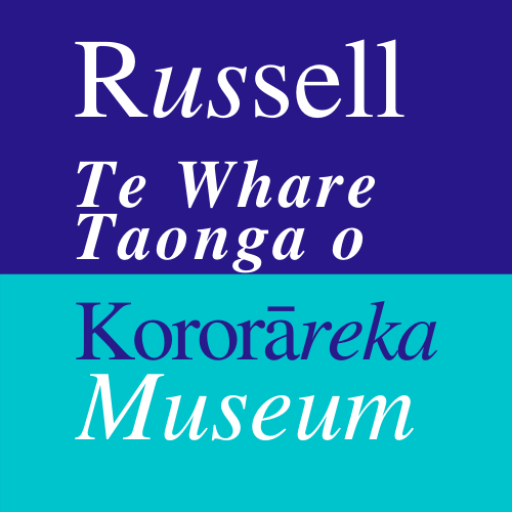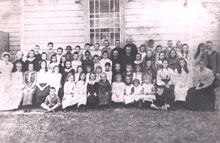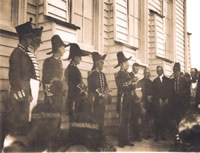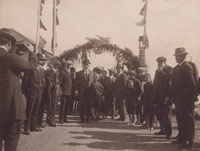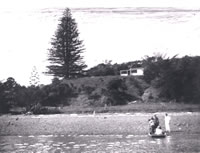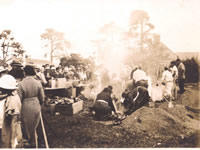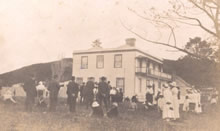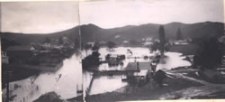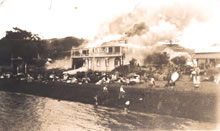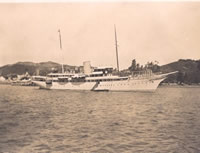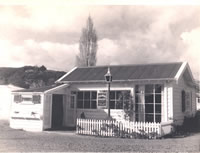Russell School Pupils c1890s
Original photo © Russell Museum
It’s the start of a new school year. This photo shows 58 Russell School pupils gathered outside their new one roomed school built in 1892. Names include Stephenson, Baker, Williams, Woods, Flowerday, Deery, Saunders, Poole and Webb. Some of their descendants are still in town today. The headmaster Mr Higginson (1892-6) is on the right. On the left is his assistant teacher Miss Honor Matthews.
Honor met an American whaling captain, James Earle of the Charles W Morgan, at Russell. After some correspondence she took a steamer to Honolulu to marry him. She sailed with him learning to be his navigator. She sailed with him again in 1902 taking her young son. Whaling voyages lasted 2-3 years.
The Charles W Morgan had 37 recorded whaling voyages from 1841 to 1920, calling at New Zealand three times. It is now part of Mystic Seaport Maritime Museum .
Even in 1896 Russell was a cosmopolitan place…. and anything could happen.
